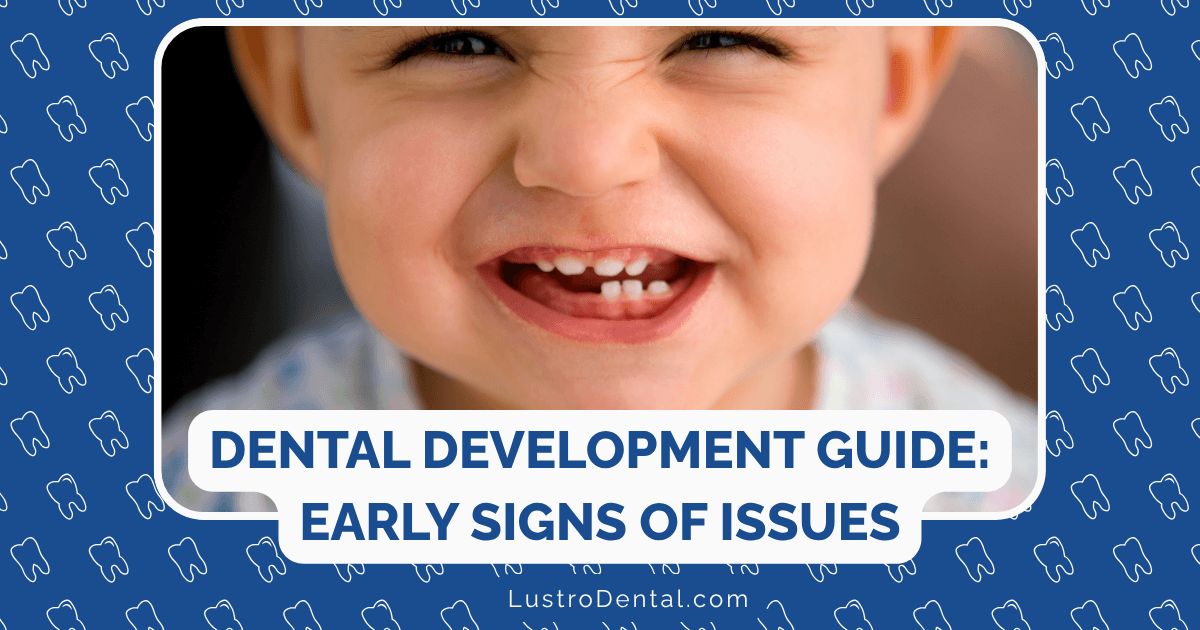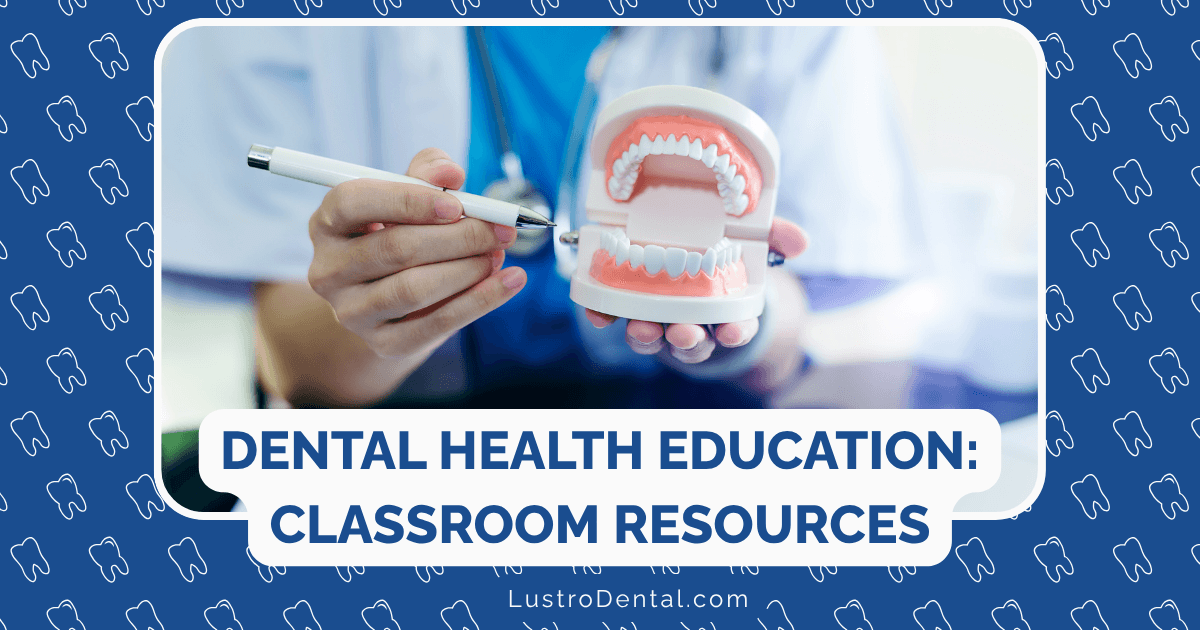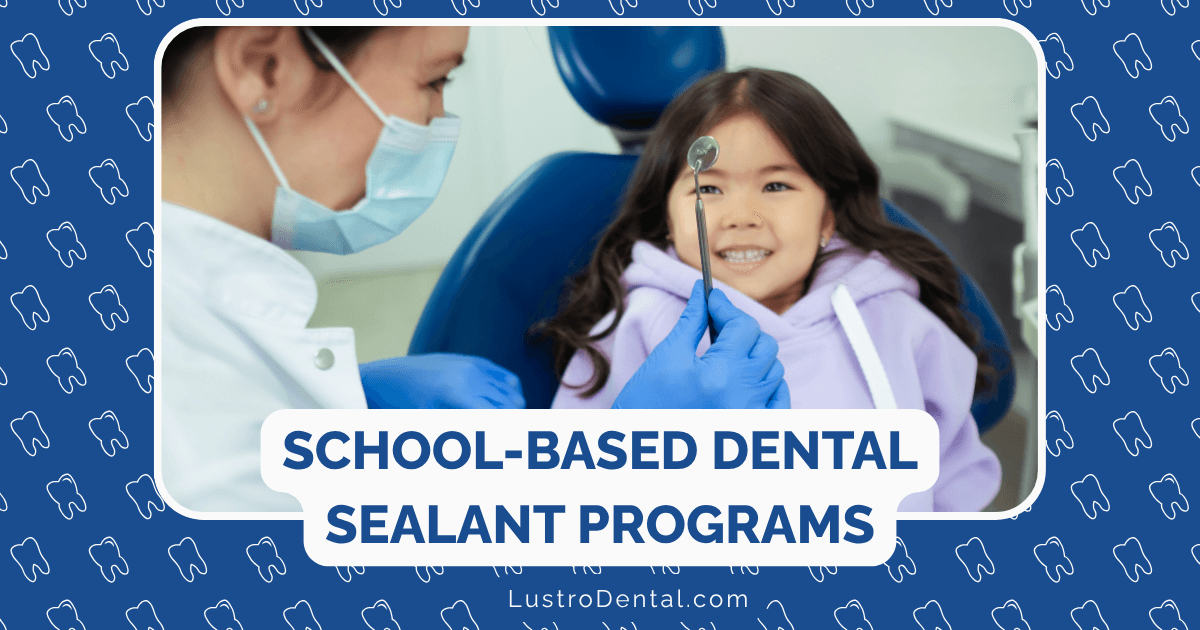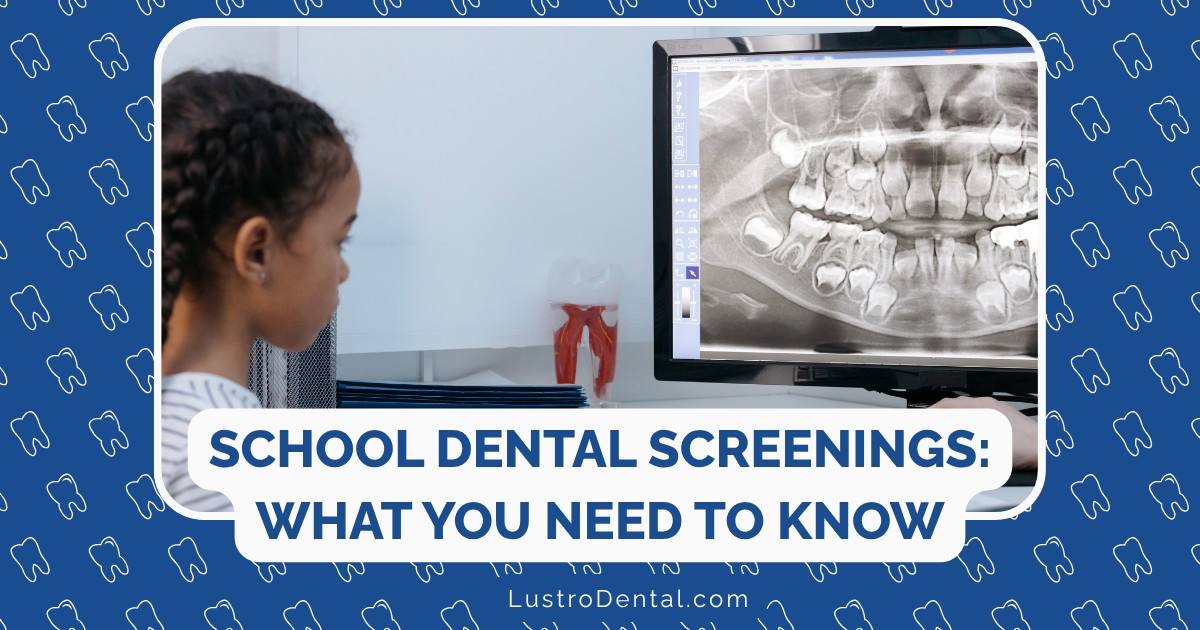Spotting Developmental Dental Issues Early: A Parent’s Visual Guide

As parents, we’re constantly watching for milestones in our children’s development—first steps, first words, first day of school. But there’s another set of developmental markers that often goes unnoticed until problems become more serious: dental development.
Having worked with families for years to promote dental health education, I’ve seen how early detection of dental issues can make an enormous difference in treatment outcomes, cost, and a child’s overall well-being. The good news is that many developmental dental issues display visible signs that parents can spot—if they know what to look for.
This guide will walk you through what to watch for at different stages of your child’s development, with visual cues that might indicate a need for professional evaluation. Think of it as adding “dental detective” to your already impressive parenting skill set.
Why Early Detection Matters
Before diving into specific signs, let’s understand why spotting dental issues early is so crucial:
- Simpler Interventions: Problems caught early often require less invasive and less expensive treatments
- Guided Growth: Young children’s jaws are still developing, making it possible to guide growth rather than correct established problems
- Prevention of Secondary Issues: Untreated dental problems can lead to speech difficulties, nutritional challenges, and even behavioral issues
- Confidence Protection: Addressing dental issues early can prevent social anxiety and self-esteem problems related to appearance
The American Association of Orthodontists recommends that all children have an orthodontic evaluation by age 7—when they have a mix of baby and permanent teeth. However, many developmental issues show signs even earlier that attentive parents can spot.
Birth to Age 3: Early Development Signs
What’s Normal at This Stage
During the first three years, your child should develop a full set of 20 primary (baby) teeth. Typically:
- First teeth appear around 6 months
- Most children have 6-8 teeth by their first birthday
- All 20 primary teeth are usually present by age 3
- Teeth should be relatively straight, with small spaces between them (these spaces are normal and beneficial)
Visual Signs That May Indicate Problems
1. Delayed Tooth Eruption
What to look for: If your child has no teeth by 12 months or significantly fewer teeth than expected for their age.
What it might mean: While timing varies among children, significant delays can indicate developmental issues, nutritional deficiencies, or genetic factors that warrant evaluation.
2. Early Tooth Decay or Discoloration
What to look for: White spots or lines on teeth, especially near the gumline, which may progress to yellow, brown, or black areas.

What it might mean: These are often the first signs of early childhood caries, sometimes called “baby bottle tooth decay.” This condition can progress rapidly in young children.
3. Abnormal Tooth Shape or Structure
What to look for: Teeth that appear unusually small, misshapen, or have visible pits or grooves.
What it might mean: These could indicate developmental abnormalities that might affect both baby teeth and the developing permanent teeth underneath.
4. Asymmetrical Jaw Development
What to look for: One side of the jaw appearing different from the other, or the lower jaw looking significantly recessed or protruding when viewed from the side.

What it might mean: Early signs of jaw growth issues that might benefit from growth guidance therapy.
Dr. Sarah Johnson, pediatric dentist at Children’s Dental Health Associates, explains: “Parents are often surprised to learn that we can spot potential orthodontic issues in very young children. The way the jaws develop in these early years sets the foundation for how permanent teeth will emerge later.”
Ages 3-6: The Preschool Years
What’s Normal at This Stage
During ages 3-6, your child’s dental development should include:
- A complete set of 20 primary teeth
- Relatively stable dentition with minimal changes until around age 5-6
- Some natural spacing between front teeth (called “developmental spacing”)
- Gradual jaw growth to accommodate future permanent teeth
Visual Signs That May Indicate Problems
1. Crowding of Baby Teeth
What to look for: Baby teeth that overlap or twist due to insufficient space.

What it might mean: If baby teeth are crowded, the permanent teeth (which are larger) will likely face even more significant crowding issues.
2. Prolonged Thumb-Sucking or Pacifier Use
What to look for: Children continuing to suck thumbs or use pacifiers past age 4, especially with intensity or frequency.
What it might mean: While some thumb-sucking is normal in younger children, prolonged habits can lead to:
- Protruding upper front teeth (buck teeth)
- An open bite (where front teeth don’t meet when back teeth are closed)
- Narrowing of the upper jaw
3. Mouth Breathing
What to look for: Your child consistently breathing through their mouth rather than their nose, especially during sleep or at rest.
Visual indicators include:
- Consistently parted lips at rest
- Dry lips or cracked corners of the mouth
- Elongated facial appearance
- Dark circles under the eyes
What it might mean: Mouth breathing can significantly affect facial and dental development, leading to a “long face syndrome” with a narrow upper jaw, high palate, and increased likelihood of sleep-disordered breathing.
4. Early Signs of Malocclusion (Bite Problems)
Even in children with all baby teeth, you can spot early signs of bite issues:
a) Crossbite
What to look for: When viewing your child’s teeth from the front, some upper teeth sit inside the lower teeth when biting down.

What it might mean: Crossbites can lead to asymmetrical jaw growth and uneven wear on teeth if not addressed early.
b) Significant Overbite
What to look for: Upper front teeth that significantly overlap the lower teeth vertically.
What it might mean: While some overlap is normal, excessive overbites can lead to wear on lower teeth and potential injury to upper teeth.
c) Underbite
What to look for: Lower front teeth sitting in front of upper front teeth when biting down.
What it might mean: This often indicates a jaw growth discrepancy that may benefit greatly from early intervention.
Ages 6-12: The Mixed Dentition Years
What’s Normal at This Stage
This period is characterized by:
- Loss of baby teeth starting around age 6, typically beginning with lower front teeth
- Eruption of first permanent molars (behind existing baby teeth) around age 6
- A mix of baby and permanent teeth throughout this period
- Some temporary unevenness or gaps as teeth transition
Visual Signs That May Indicate Problems
1. Significantly Early or Late Loss of Baby Teeth
What to look for: Baby teeth falling out before age 5 or baby teeth not becoming loose by age 7-8.
What it might mean: Early loss can lead to space loss for permanent teeth, while significantly delayed loss might indicate impacted permanent teeth or missing permanent teeth.
2. Permanent Teeth Erupting Behind Baby Teeth
What to look for: New permanent teeth coming in behind still-present baby teeth, creating a “double row” appearance sometimes called “shark teeth.”

What it might mean: While sometimes this resolves as baby teeth fall out naturally, it can indicate a size discrepancy between the jaw and teeth that may require intervention.
3. Significant Crowding of Permanent Teeth
What to look for: Permanent front teeth coming in twisted, overlapped, or significantly displaced due to lack of space.
What it might mean: Crowding at this stage often indicates a need for orthodontic evaluation, as it typically worsens as more permanent teeth erupt.
4. Midline Discrepancy
What to look for: The center lines of the upper and lower teeth don’t align with each other or with the center of the face.

What it might mean: This can indicate asymmetrical jaw growth or tooth positioning issues that may require orthodontic correction.
5. Abnormal Eruption Patterns
What to look for: Permanent teeth emerging in an unusual order or position.
What it might mean: This could indicate impacted teeth, missing teeth, or extra teeth that are blocking normal eruption.
Dr. Michael Chen, orthodontist at Children’s Orthodontic Specialists, notes: “The mixed dentition phase is our golden opportunity for intervention. We can guide jaw growth, create space for crowded teeth, and address bite issues while the child is still growing. Parents who notice these visual signs and seek evaluation are giving their children a tremendous advantage.”
Functional Signs Across All Ages
Beyond visual cues, certain functional issues can indicate developmental dental problems:
1. Speech Difficulties
What to notice: Persistent difficulty pronouncing certain sounds, especially “s,” “z,” “th,” “l,” and “r” beyond the age when these sounds are typically mastered.
What it might mean: Certain malocclusions or tongue positioning issues can directly affect speech production.
2. Chewing or Biting Difficulties
What to notice:
- Difficulty biting into foods like apples or sandwiches
- Chewing predominantly on one side
- Frequent cheek or tongue biting during meals
What it might mean: These can indicate bite alignment issues that affect function.
3. Jaw Noises or Pain
What to notice: Clicking, popping, or grinding sounds when your child opens or closes their mouth, or complaints of jaw pain or headaches.
What it might mean: These may indicate temporomandibular joint (TMJ) issues, which can be related to malocclusion or growth abnormalities.
4. Grinding or Clenching
What to notice: Visible grinding during sleep or reports from your child about jaw tiredness in the morning.
What it might mean: While occasional grinding can be normal, persistent grinding (bruxism) may indicate bite issues or airway problems.
The Impact of Airway Issues on Dental Development
Recent research has highlighted the significant connection between breathing issues and dental development. Parents should be particularly vigilant about these signs:
Signs of Potential Airway Issues
What to notice:
- Snoring or noisy breathing during sleep
- Mouth breathing during the day
- Restless sleep or unusual sleeping positions
- Excessive daytime sleepiness or behavioral issues
- Forward head posture
- Dark circles under the eyes
What it might mean: These can indicate obstructed breathing, which often correlates with narrow dental arches, high palates, and malocclusion. The relationship is bidirectional—breathing issues can affect dental development, and dental/jaw development can affect breathing.
When to Seek Professional Evaluation
Based on the visual and functional signs above, here are key times to consult with a dental professional:
- First dental visit: By age 1 or within 6 months of the first tooth erupting
- First orthodontic evaluation: By age 7, as recommended by the American Association of Orthodontists
- Immediately: If you notice dental trauma, significant pain, or signs of infection
- Promptly: If you observe any of the visual or functional signs discussed in this guide
The Evaluation Process: What to Expect
When you bring your child for an evaluation based on concerns you’ve noticed, the dental professional will typically:
- Take a comprehensive history: Including developmental milestones, habits, and family dental history
- Perform a clinical examination: Looking at teeth, jaw relationships, and functional aspects
- Obtain diagnostic records if needed: This might include photographs, X-rays, or digital scans
- Discuss findings and options: Including whether to treat now or monitor for future development
Preventive Measures for Optimal Dental Development
While some developmental dental issues are genetic, parents can take several steps to promote healthy development:
1. Establish Good Oral Hygiene Early
- Clean gums before teeth emerge
- Begin brushing with the first tooth
- Use age-appropriate amounts of fluoride toothpaste
- Help with brushing until around age 7-8
2. Address Habits That Impact Development
- Limit pacifier use ideally by age 2, definitely by age 4
- Discourage prolonged thumb-sucking
- Address tongue thrust habits if identified by a professional
- Encourage nasal breathing
3. Maintain Regular Dental Visits
- Begin by age 1
- Continue with recommended recall schedule (typically every 6 months)
- Don’t skip visits during the crucial mixed dentition phase (ages 6-12)
4. Consider Nutritional Factors
- Ensure adequate calcium and vitamin D for jaw and tooth development
- Limit sugary foods and drinks that can lead to decay
- Provide crunchy, fibrous foods that exercise jaw muscles (as age-appropriate)
The Connection Between Dental Development and Overall Health
It’s important to understand that dental development doesn’t occur in isolation. Research increasingly shows connections between:
- Airway health and dental development: Breathing issues can affect jaw growth and tooth position
- Nutrition and dental formation: Deficiencies can impact tooth and jaw development
- Oral habits and facial growth: Habits like thumb-sucking directly influence facial structure
- Dental alignment and speech development: Malocclusion can affect language acquisition
Dr. Lisa Williams, pediatric dentist at Children’s Dental Health Institute, emphasizes: “We’re increasingly recognizing that optimal dental development is about more than just straight teeth. It’s about creating the conditions for proper breathing, speaking, eating, and overall health. Parents who are attentive to these early signs are doing their children a tremendous service.”
Conclusion: Your Role as a Dental Development Detective
As a parent, you have a unique advantage in spotting dental development issues early. You see your child daily, observe their habits, hear their speech, and notice subtle changes that might escape even the most attentive dental professional who sees your child only periodically.
By becoming familiar with these visual and functional signs, you become an essential partner in your child’s dental health team. Your observations, combined with professional expertise, create the best opportunity for timely intervention and optimal outcomes.
Remember that developmental variations are normal, and not every dental irregularity requires treatment. The goal of this guide isn’t to cause concern but to empower you with knowledge that can lead to earlier, less invasive, and more effective interventions when needed.
Your attentiveness today could save your child from more complex treatment in the future—truly a gift that will keep them smiling for a lifetime.
Has this guide helped you identify any potential concerns in your child’s dental development? Share your experiences or questions in the comments below!







